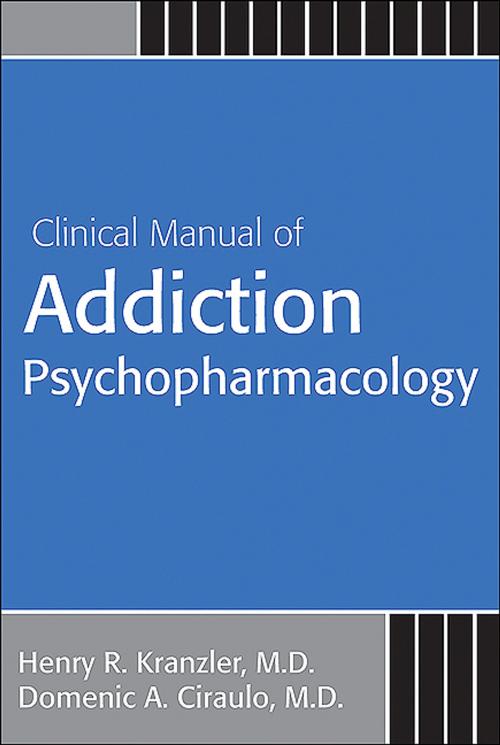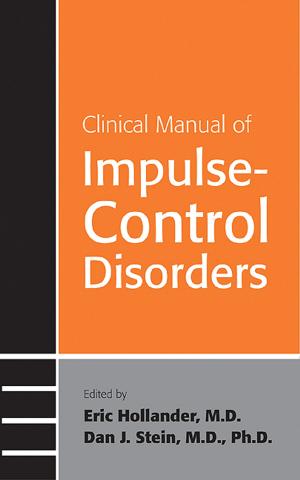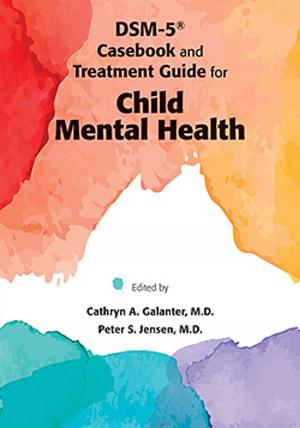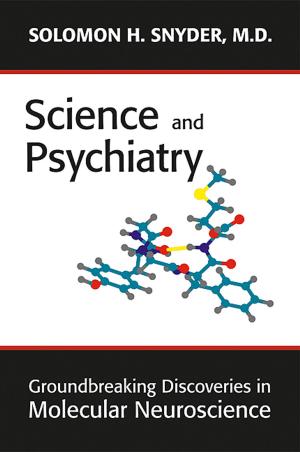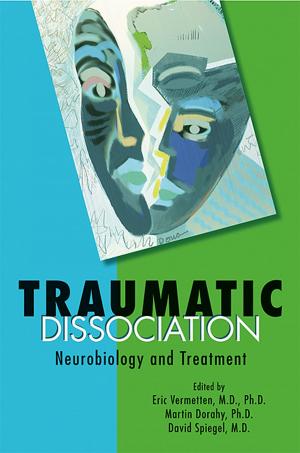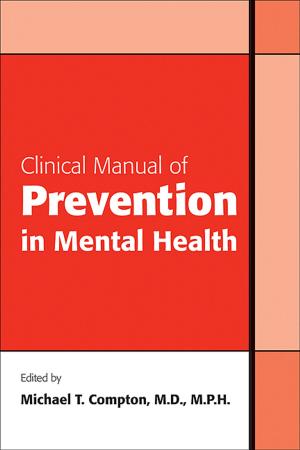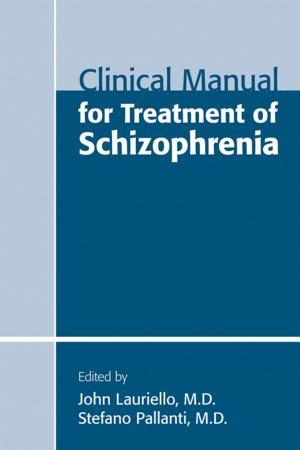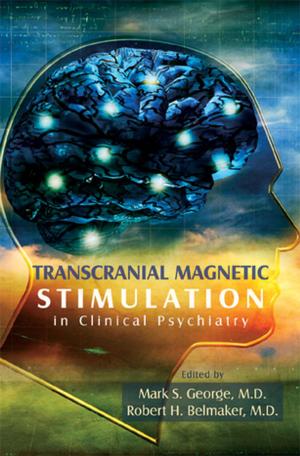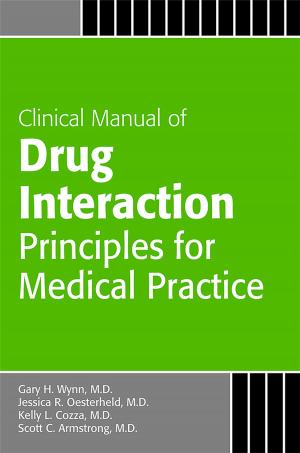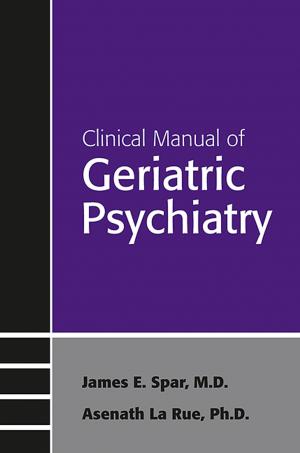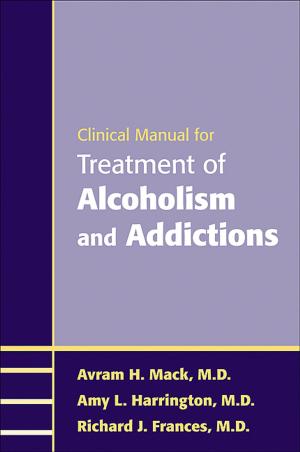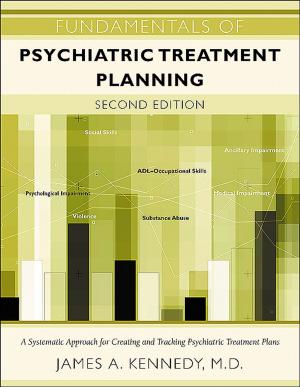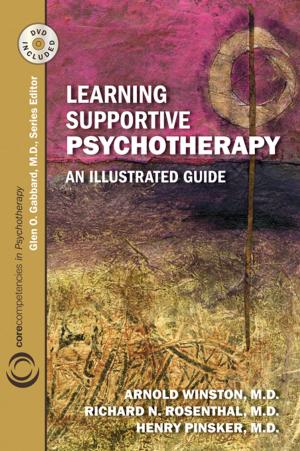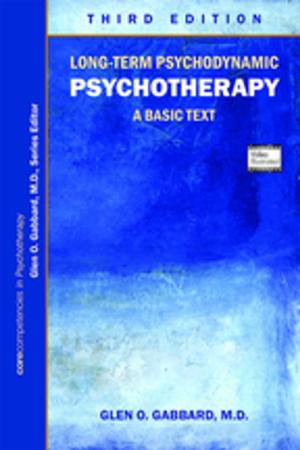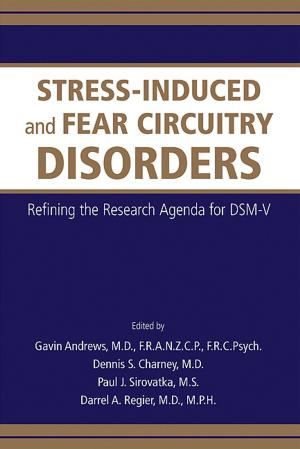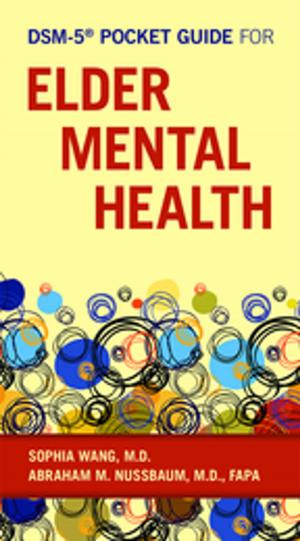Clinical Manual of Addiction Psychopharmacology
Nonfiction, Health & Well Being, Psychology, Psychiatry, Medical, Specialties| Author: | ISBN: | 9781585626632 | |
| Publisher: | American Psychiatric Publishing | Publication: | April 2, 2007 |
| Imprint: | American Psychiatric Publishing | Language: | English |
| Author: | |
| ISBN: | 9781585626632 |
| Publisher: | American Psychiatric Publishing |
| Publication: | April 2, 2007 |
| Imprint: | American Psychiatric Publishing |
| Language: | English |
Recent -- and exciting -- discoveries of the neuropharmacology and psychopharmacology of addictive disorders make the Clinical Manual of Addiction Psychopharmacology an essential guide to our understanding of this exceptionally challenging field.
Written with a therapeutic focus as a clinical guide for the use of pharmacotherapy in patients with substance use disorders, the Clinical Manual of Addiction Psychopharmacology offers ? In-depth background discussion on each major class of drug and its treatment.? Meticulously detailed reviews of the pharmacology of addictive drugs and the medications used to treat dependence on these addictive drugs.? The latest work of 24 recognized experts from both the United States and abroad -- all contributors to the empirical literature covered here.? Nine chapters, highlighted by informative illustrations, covering all of the major classes of substances that are clinically important in relation to addiction: alcohol, opioids, sedative-hypnotics, cannabis, cocaine and psychostimulants, hallucinogens and phencyclidine, club drugs (gamma-hydroxybutyrate, ecstasy, and ketamine), inhalants, and tobacco.? A discussion of psychosocial treatments combined with pharmacotherapy for alcohol, cocaine, and opioid use disorders. The goal of this approach is to optimize outcomes by understanding how patient characteristics, such as substance use disorder typology, severity, family history, and comorbid psychopathology, may interact with psychosocial and pharmacological treatment.
Each chapter covers three primary aspects of a major drug group: an overview of the clinical pharmacology of the abused substance, phenomenology or pharmacological treatment or both of the abstinence syndrome, and pharmacological treatment for relapse prevention.
For disorders in which no clear pharmacotherapy has proven effective (e.g., cocaine dependence), or for disorders in which no clear abstinence syndrome has been established (e.g., marijuana dependence), authors review the basic pharmacology of the drug and the phenomenology of withdrawal to enable clinicians to evaluate new clinical research in medications development for those disorders.
An essential guide for clinical and social work, the Clinical Manual of Addiction Psychopharmacology will find a wide audience among all prescribing clinicians, psychiatric educators and their students, and other mental health practitioners.
Recent -- and exciting -- discoveries of the neuropharmacology and psychopharmacology of addictive disorders make the Clinical Manual of Addiction Psychopharmacology an essential guide to our understanding of this exceptionally challenging field.
Written with a therapeutic focus as a clinical guide for the use of pharmacotherapy in patients with substance use disorders, the Clinical Manual of Addiction Psychopharmacology offers ? In-depth background discussion on each major class of drug and its treatment.? Meticulously detailed reviews of the pharmacology of addictive drugs and the medications used to treat dependence on these addictive drugs.? The latest work of 24 recognized experts from both the United States and abroad -- all contributors to the empirical literature covered here.? Nine chapters, highlighted by informative illustrations, covering all of the major classes of substances that are clinically important in relation to addiction: alcohol, opioids, sedative-hypnotics, cannabis, cocaine and psychostimulants, hallucinogens and phencyclidine, club drugs (gamma-hydroxybutyrate, ecstasy, and ketamine), inhalants, and tobacco.? A discussion of psychosocial treatments combined with pharmacotherapy for alcohol, cocaine, and opioid use disorders. The goal of this approach is to optimize outcomes by understanding how patient characteristics, such as substance use disorder typology, severity, family history, and comorbid psychopathology, may interact with psychosocial and pharmacological treatment.
Each chapter covers three primary aspects of a major drug group: an overview of the clinical pharmacology of the abused substance, phenomenology or pharmacological treatment or both of the abstinence syndrome, and pharmacological treatment for relapse prevention.
For disorders in which no clear pharmacotherapy has proven effective (e.g., cocaine dependence), or for disorders in which no clear abstinence syndrome has been established (e.g., marijuana dependence), authors review the basic pharmacology of the drug and the phenomenology of withdrawal to enable clinicians to evaluate new clinical research in medications development for those disorders.
An essential guide for clinical and social work, the Clinical Manual of Addiction Psychopharmacology will find a wide audience among all prescribing clinicians, psychiatric educators and their students, and other mental health practitioners.
